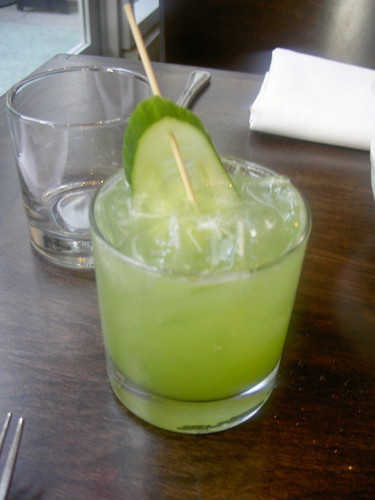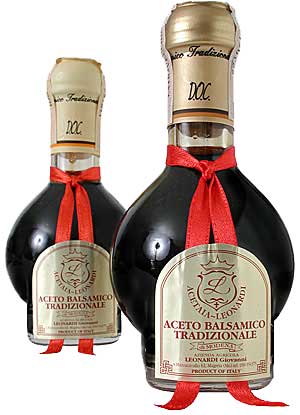 I’m harvesting way more tomatoes than I can eat (unless I wanted to do that awesome tomato diet). But it’s been my pleasure to give them away. I’m rather proud of my tomatoes; they’re all flavorful and sweet. All except for the Romas, which are mealy and characterless. Romas are a paste tomato whose high pectin content makes it good for cooking. In a sauce they come alive and you can really taste their tomato-y goodness.
My ego prevents me from letting people eat the Romas I give them raw. God forbid they think I grow bland tomatoes. And I only would be giving them enough for a half cup of marinara. What's the point? So I’ve been keeping them, which leads to another dilemma: My one Roma plant has yielded a dozen or so every days which is substantial but not enough to start canning. What to do?
From the first harvest I made a salsa, which, while not cooked, tastes amazing.
I’m harvesting way more tomatoes than I can eat (unless I wanted to do that awesome tomato diet). But it’s been my pleasure to give them away. I’m rather proud of my tomatoes; they’re all flavorful and sweet. All except for the Romas, which are mealy and characterless. Romas are a paste tomato whose high pectin content makes it good for cooking. In a sauce they come alive and you can really taste their tomato-y goodness.
My ego prevents me from letting people eat the Romas I give them raw. God forbid they think I grow bland tomatoes. And I only would be giving them enough for a half cup of marinara. What's the point? So I’ve been keeping them, which leads to another dilemma: My one Roma plant has yielded a dozen or so every days which is substantial but not enough to start canning. What to do?
From the first harvest I made a salsa, which, while not cooked, tastes amazing. | Salsa Fresca (adapted from Two Hot Tamales) 6 paste tomatoes, halved (around a pound?) ½ medium onion 2 cloves garlic 2 tbsp cider vinegar 1 handful of cilantro ½ dried chipotle chile (or to your heat tolerance) A healthy dose of salt and pepper Put everything in a blender and blast it. FYI, using canned chipotle is fine but they can get super hot. Also, slicing tomatoes can be used but your salsa will be more watery. |
 maybe enough for a few cups of sauce
With the next harvest I had a lot more tomatoes, but still not enough for sauce. I seemed to remember Mario Batali roasting tomatoes so I tried it. I sliced them lengthwise and sprinkled them with salt and sugar and olive oil, added a couple cloves of garlic and put them in a 275 degree oven for a few hours. I guess the sugar might be considered cheating, but whatever. It's only a couple teaspoons and it tastes better. Some people add herbs but I just want pure tomato flavor.
maybe enough for a few cups of sauce
With the next harvest I had a lot more tomatoes, but still not enough for sauce. I seemed to remember Mario Batali roasting tomatoes so I tried it. I sliced them lengthwise and sprinkled them with salt and sugar and olive oil, added a couple cloves of garlic and put them in a 275 degree oven for a few hours. I guess the sugar might be considered cheating, but whatever. It's only a couple teaspoons and it tastes better. Some people add herbs but I just want pure tomato flavor.
 Your results may vary – oven fluctuations, tomato size – so after a couple hours, it’s best to check on them periodically. You’re looking for something that’s dried but pliant with just a tiny bit of juice. You don’t want a sun-dried tomato.
Your results may vary – oven fluctuations, tomato size – so after a couple hours, it’s best to check on them periodically. You’re looking for something that’s dried but pliant with just a tiny bit of juice. You don’t want a sun-dried tomato.
 Pack them in olive oil and store them in the fridge. Put them in pasta, salad, sauces, sandwiches, or whatever. At least, that’s what I read. So far mine haven't made it beyond the antipasto plate.
Pack them in olive oil and store them in the fridge. Put them in pasta, salad, sauces, sandwiches, or whatever. At least, that’s what I read. So far mine haven't made it beyond the antipasto plate.













 Traditionally, balsamic vinegar is made from boiled down grape juice. It gets its flavor as it ages in barrels made of various woods: cherry, chestnut, acacia, oak, ash, juniper and mulberry. Over several years, water evaporates so they keep pouring the vinegar into smaller and smaller casks. The finished product ends up tasting concentrated and raisin-y with woody, sometimes resinous, flavors. I have very generous friends who give me some fancy bottle of balsamic vinegar every year for Christmas. Not to sound ungrateful but I hate the stuff.
Traditionally, balsamic vinegar is made from boiled down grape juice. It gets its flavor as it ages in barrels made of various woods: cherry, chestnut, acacia, oak, ash, juniper and mulberry. Over several years, water evaporates so they keep pouring the vinegar into smaller and smaller casks. The finished product ends up tasting concentrated and raisin-y with woody, sometimes resinous, flavors. I have very generous friends who give me some fancy bottle of balsamic vinegar every year for Christmas. Not to sound ungrateful but I hate the stuff.



 One of the standout dishes was the papas Canarias, potatoes in the Canary Islands style. Basically it’s baby fingerlings boiled in salty water with mojo verde. They look unimpressive, shriveled with a thin rime of dried salt, but they taste delicious.So when I had some friends coming over last night, I thought, how hard can it be? I tossed handfuls of salt into a pot of water until it tasted as acrid as seawater and boiled some baby potatoes from the farmer’s market in it for 25 minutes. I drained them and let the taters dry in a warm oven. Meanwhile I grabbed some various herb sprigs from the garden for the mojo verde – mostly Italian parsley, a couple sprigs of cilantro, a couple leaves of basil. I added a garlic clove, a teaspoon of lemon zest, a squeeze of lemon, a half a teaspoon of red pepper flakes with salt and pepper and then blended it with 3/4 a cup of extra virgin olive oil.
One of the standout dishes was the papas Canarias, potatoes in the Canary Islands style. Basically it’s baby fingerlings boiled in salty water with mojo verde. They look unimpressive, shriveled with a thin rime of dried salt, but they taste delicious.So when I had some friends coming over last night, I thought, how hard can it be? I tossed handfuls of salt into a pot of water until it tasted as acrid as seawater and boiled some baby potatoes from the farmer’s market in it for 25 minutes. I drained them and let the taters dry in a warm oven. Meanwhile I grabbed some various herb sprigs from the garden for the mojo verde – mostly Italian parsley, a couple sprigs of cilantro, a couple leaves of basil. I added a garlic clove, a teaspoon of lemon zest, a squeeze of lemon, a half a teaspoon of red pepper flakes with salt and pepper and then blended it with 3/4 a cup of extra virgin olive oil.


 Last night my friends, Drew and Jenna, hosted grilled lobster night with me cooking. Truth be told, while I like lobster, I’m much more of a crab kind of guy. Better flavor, more versatile to cook with, blah, blah, blah. But it was the first hot day of the summer so grilled lobster seemed to be the appropriate
Last night my friends, Drew and Jenna, hosted grilled lobster night with me cooking. Truth be told, while I like lobster, I’m much more of a crab kind of guy. Better flavor, more versatile to cook with, blah, blah, blah. But it was the first hot day of the summer so grilled lobster seemed to be the appropriate 
 But then I thought, how big is the difference between five seconds of electrocution and 20 seconds of boiling water? It’s not like the lobster’s going to suffer from post traumatic stress disorder; either way it’s dead. And there’s even
But then I thought, how big is the difference between five seconds of electrocution and 20 seconds of boiling water? It’s not like the lobster’s going to suffer from post traumatic stress disorder; either way it’s dead. And there’s even